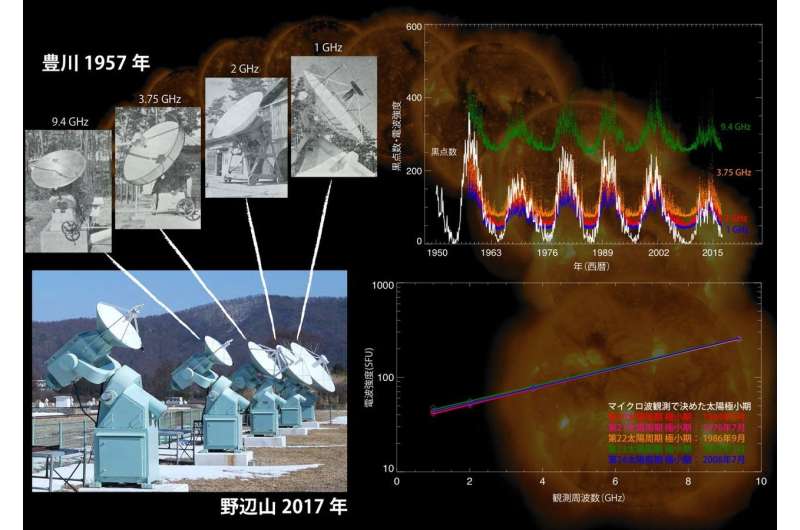Solar minimum surprisingly constant

Using more than a half-century of observations, Japanese astronomers have discovered that the microwaves coming from the sun at the minimums of the past five solar cycles have been the same each time, despite large differences in the maximums of the cycles.
In Japan, continuous four-frequency solar microwave observations (1, 2, 3.75 and 9.4 GHz) began in 1957 at the Toyokawa Branch of the Research Institute of Atmospherics, Nagoya University. In 1994, the telescopes were relocated to NAOJ Nobeyama Campus, where they have continued observations up to the present.
A research group led by Masumi Shimojo, assistant professor at NAOJ Chile Observatory, including members from Nagoya University, Kyoto University, and Ibaraki University, analyzed the more than 60 years of solar microwave data from these telescopes. They found that microwave intensities and spectra at the minimums of the latest five cycles were the same every time. In contrast, during the periods of maximum solar activity, both the intensity and spectrum varied from cycle to cycle.
Masumi Shimojo says, "Other than sunspot observations, uniform long-term observations are rare in solar astronomy. It is very meaningful to discover a trend extending beyond a single solar cycle. This is an important step in understanding the creation and amplification of solar magnetic fields, which generate sunspots and other solar activity."
The sun goes through a cycle of active and quiet periods approximately once every 11 years. This "solar cycle" is often associated with the number of sunspots, but there are other types of solar activity, as well. So simply counting the number of sunspots is insufficient to understand the solar activity conditions.
Microwaves are another indicator of solar activity. Microwaves, unlike sunspots, can be observed on cloudy days. Also, monitoring multiple frequencies of microwaves makes it possible to calculate the relative strength at each frequency (this is called the spectrum).
More information: Masumi Shimojo et al, Variation of the Solar Microwave Spectrum in the Last Half Century, The Astrophysical Journal (2017). DOI: 10.3847/1538-4357/aa8c75
Journal information: Astrophysical Journal
Provided by National Institutes of Natural Sciences





















